Dodge CEO Says Electrification Won’t Spoil American Muscle

With the brunt of the automotive industry vowing to electrify their lineups and government regulators keen on restricting emissions, many have wondered how the change will impact American brands. While Tesla has managed to solidify the United States as the dominant purveyor of all-electric vehicles, American performance has long been synonymous with exceptionally large motors boasting the kind of oomph foreign manufacturers might consider excessive at a price point that seems downright reasonable.
The concern here is that the changing landscape is about to close the door on American muscle cars for a second time. However, Dodge CEO Tim Kuniskis is trying to assure the world that this won’t be the case. He’s telling anyone willing to listen that its forthcoming products will continue to deliver the kind of performance Mopar fans are accustomed to.
“Everybody's panicked about [electrification]," Kuniskis told Automotive News from the sidelines of Roadkill Nights, the annual Mopar-themed motorsports event held in Pontiac, Michigan, ahead of the Woodward Dream Cruise. "It is what it is. This is the regulation. This is where the industry is going. This is what we have to do."
But the CEO also said EVs offer some unique performance advantages over combustion vehicles.
From Automotive News:
Kuniskis said the industry is in a similar position as it was in the 1970s, when regulations put a shackle on muscle cars. But Kuniskis feels this moment is different. He sees manufacturers delivering fun EVs with plenty of punch for speed lovers.
"There's tons of potential in this technology," Kuniskis said. "I get it: Not everybody is adopting to this technology right away, and not everybody will. It will take many years for everybody to, but people will. Early adopters will, and when they see what we can do with this technology, they will start coming along.
"Eventually people will see that this technology can make something cool and fun. It's probably going to sound different, but people tuning cars, making cars faster and competing against each other will not go away. They say the first drag race occurred the second the second car was built. People are going to compete. People are going to compete to have a cooler, faster, funner car and it's not going to change."
While looking toward that future, Kuniskis has to bridge the gap before the next-generation Charger arrives in the second or third quarter of 2024.
Tesla has certainly proved that battery-powered passenger vehicles are capable of being blisteringly fast. The Model S boasts the kind of acceleration that used to be exclusive to six-figure performance cars. Though it could also be argued that the all-electric sedan effectively is a six-figure performance car. The Dual Motor Tesla Model S MSRP begins at $88,490 and the hi-po Plaid starts at a whopping $108,490.
Comparing the situation to the regulatory landscape of the 1970s also seems like a bad idea considering just how badly that worked out for American brands. Back then, swelling regulatory restrictions effectively killed the muscle car and kicked off the Malaise Era of automotive design. The period was marked by U.S. companies losing ground to foreign brands and delivering the kind of terrible vehicles that made it extremely easy to buy Japanese.
Obviously, Kuniskis is hoping to express that things will be different this time around. But we’ve been seeing all the hallmarks of the bad old days starting to manifest. Consumer surveys are showcasing that people are becoming less satisfied with modern designs. Most of this stems from lackluster experiences with modern infotainment systems. But global manufacturing quality also seems to be on the decline and Americans seem particularly hesitant to embrace all-electric vehicles (Tesla excluded) as more V8-powered models fall by the wayside.
While loopholes in Corporate Average Fuel Economy standards basically guarantee the United States can still produce massive vehicles with gargantuan gasoline engines, it also means they’ll be pickups and SUVs — neither of which are likely to offer the kind of handling available from a coupe or sedan.
Kuniskis, who also heads Ram, addressed this indirectly by suggesting there was an overlap between the kind of people that buy pickups and muscle cars.
"Inside the company, these brands are independent little businesses, but to the outside world, the customers see these as the same company," he said. "They see Jeep, Chrysler, Dodge, Ram, everything in the same showroom.
"So they realize that it's all part of one family. But what people forget is pickup trucks today are so popular that they cross over so many different buyer profiles. The [number one] garage mate of a muscle car is a pickup truck. The people that are here for performance cars also love trucks, and the people who love trucks also love muscle cars, so there's a natural affinity between the two."
However, it’s unclear what the muscle car of tomorrow will be. Dodge’s plans for the next-generation Charger (and presumably Challenger) have remained murky. But the brand has showcased an all-electric prototype (pictured above) that imitates a V8 exhaust note, hinted that the vehicle could utilize a powerful straight-six motor, and said the resulting product (whatever it is) would go on sale during the second half of 2024.
But the problem is that none of that feels particularly American or likely to remind anybody of Dodge’s glory days. Even if it ends up being a faster car, there’s a real chance it won’t resonate with the current Mopar clientele.
The issue may even carry over to Dodge’s other models. While your author found himself enjoying the Alfa Romeo Tonale far more than anticipated, it’s hard to envision the model as a product from Dodge once it’s been rebadged as the Hornet. Chrysler brands have enjoyed a long history of rebadging stellar vehicles from other companies (e.g. Diamond-Star Motors) and I hope they sell truckloads. But, beyond the bodywork, there’s nothing about the top-tier Hornet hybrid R/T that would lead one to believe it’s supposed to be a modern Dodge product.
Maybe that’ll change once Stellantis brands begin producing more electrified products for the American market. But then what exactly will Dodge be doing differently from the rest of the pack? How does it intend on maintaining its well-earned reputation?
At any rate, the company plans on flooding the market with as many traditional muscle cars as can be built in the interim and capitalizing on them by suggesting they’ll be the “last call” for V8-powered Dodges. Chevrolet appears to be doing the same thing with the Camaro, while Ford has opted to continue building the gasoline-powered Mustang alongside the so-called “Mustang” Mach-E all-electric crossover.
But the billion-dollar question is what will actually work for the brands’ bottom line. Will electrification herald a new period of American performance or is this going to be the springboard for Malaise Era 2.0?
Kuniskis seems confident things will work out and is a likable fellow. We absolutely want to believe him. But he’s also an automotive CEO and convincing the public that his business has a winning strategy is a big part of the job.
[Images: Dodge]
Become a TTAC insider. Get the latest news, features, TTAC takes, and everything else that gets to the truth about cars first by subscribing to our newsletter.

A staunch consumer advocate tracking industry trends and regulation. Before joining TTAC, Matt spent a decade working for marketing and research firms based in NYC. Clients included several of the world’s largest automakers, global tire brands, and aftermarket part suppliers. Dissatisfied with the corporate world and resentful of having to wear suits everyday, he pivoted to writing about cars. Since then, that man has become an ardent supporter of the right-to-repair movement, been interviewed on the auto industry by national radio broadcasts, driven more rental cars than anyone ever should, participated in amateur rallying events, and received the requisite minimum training as sanctioned by the SCCA. Handy with a wrench, Matt grew up surrounded by Detroit auto workers and managed to get a pizza delivery job before he was legally eligible. He later found himself driving box trucks through Manhattan, guaranteeing future sympathy for actual truckers. He continues to conduct research pertaining to the automotive sector as an independent contractor and has since moved back to his native Michigan, closer to where the cars are born. A contrarian, Matt claims to prefer understeer — stating that front and all-wheel drive vehicles cater best to his driving style.
More by Matt Posky
Latest Car Reviews
Read moreLatest Product Reviews
Read moreRecent Comments
- Jeff I do think this is a good thing. Teaching salespeople how to interact with the customer and teaching them some of the features and technical stuff of the vehicles is important.
- MKizzy If Tesla stops maintaining and expanding the Superchargers at current levels, imagine the chaos as more EV owners with high expectations visit crowded and no longer reliable Superchargers.It feels like at this point, Musk is nearly bored enough with Tesla and EVs in general to literally take his ball and going home.
- Incog99 I bought a brand new 4 on the floor 240SX coupe in 1989 in pearl green. I drove it almost 200k miles, put in a killer sound system and never wish I sold it. I graduated to an Infiniti Q45 next and that tank was amazing.
- CanadaCraig As an aside... you are so incredibly vulnerable as you're sitting there WAITING for you EV to charge. It freaks me out.
- Wjtinfwb My local Ford dealer would be better served if the entire facility was AI. At least AI won't be openly hostile and confrontational to your basic requests when making or servicing you 50k plus investment and maybe would return a phone call or two.

























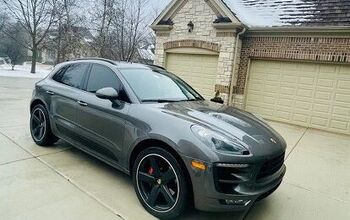
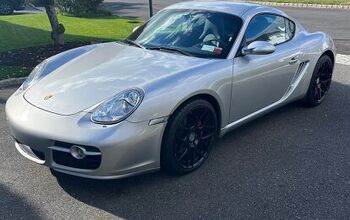
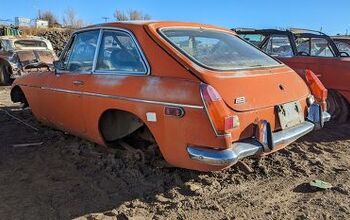

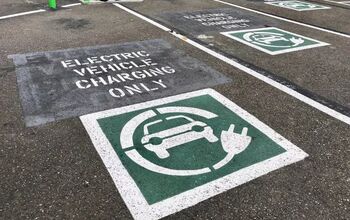
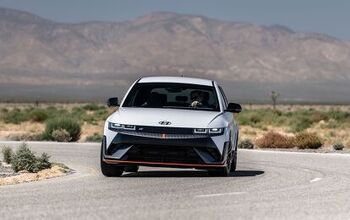
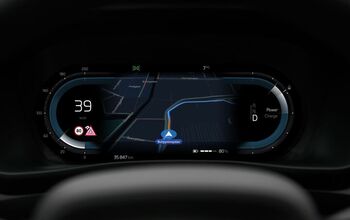

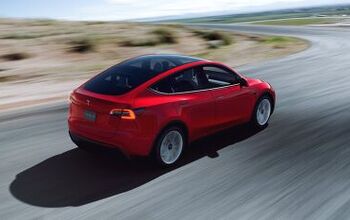
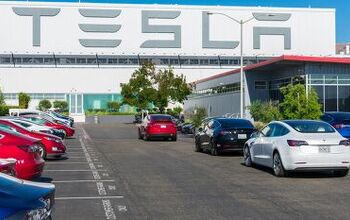
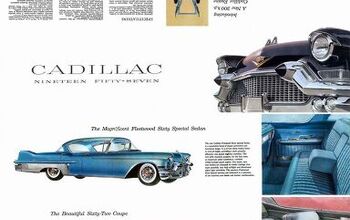
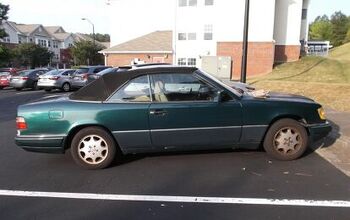
Comments
Join the conversation
You guys act like EV's don't make noise and are like driving a video game. I love V8 rumble (though an uncorked BMW V10 is probably my favorite engine noise), but an electric motor whirring away like Doc Brown's Delorean is pretty cool in its own right. You look at some of the purpose built race electrics (the real future of EV muscle...all those sound gizmos are for boomers) and they make a glorious racket.
I know it is hard for some to accept for whom the pinnacle of performance is pinion snubbers on your Dodge, but EV muscle is going to be glorious. And as a bonus since you don't have to worry about CAFE and stuff they will be free to not style the cars in a wind tunnel.
This is a win for enthusiasts. But it will be difficult for those who see the Olds Delta 88 Brougham as peak car, which is a lot of posters here.
The irony is that EV's feel more like a threat to the old school, small sports cars (MG, Triumph, Fiat, Miata) than they do to muscle cars. Sure, Dodge never made those but EV's are at least capable of being relatively heavy and very fast in a straight line. They struggle to be truly nimble.
In the end, muscle cars are cultural icons but all such icons eventually give way to time and technology, like those little sports cars did long ago (Miata excepted). I'm more motivated by the loss of the do-it-yourself side of the hot rod culture b/c I do believe that's going to be a tougher path going forward (that we need right-to-repair at all is a little insane).
Lastly, embrace the good, when it's good. EV's can be serious performers, even if they'll never have that V8 rumble.